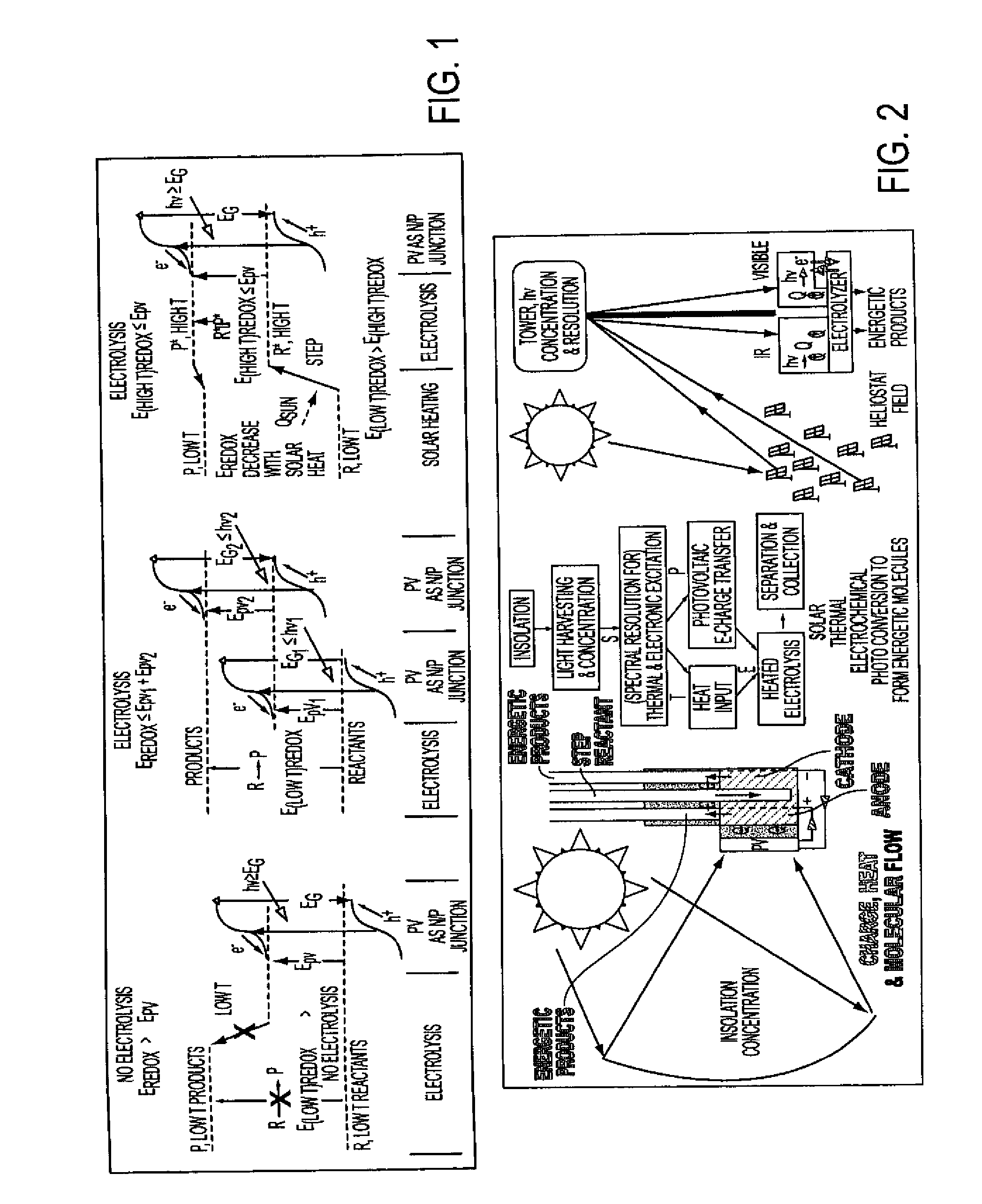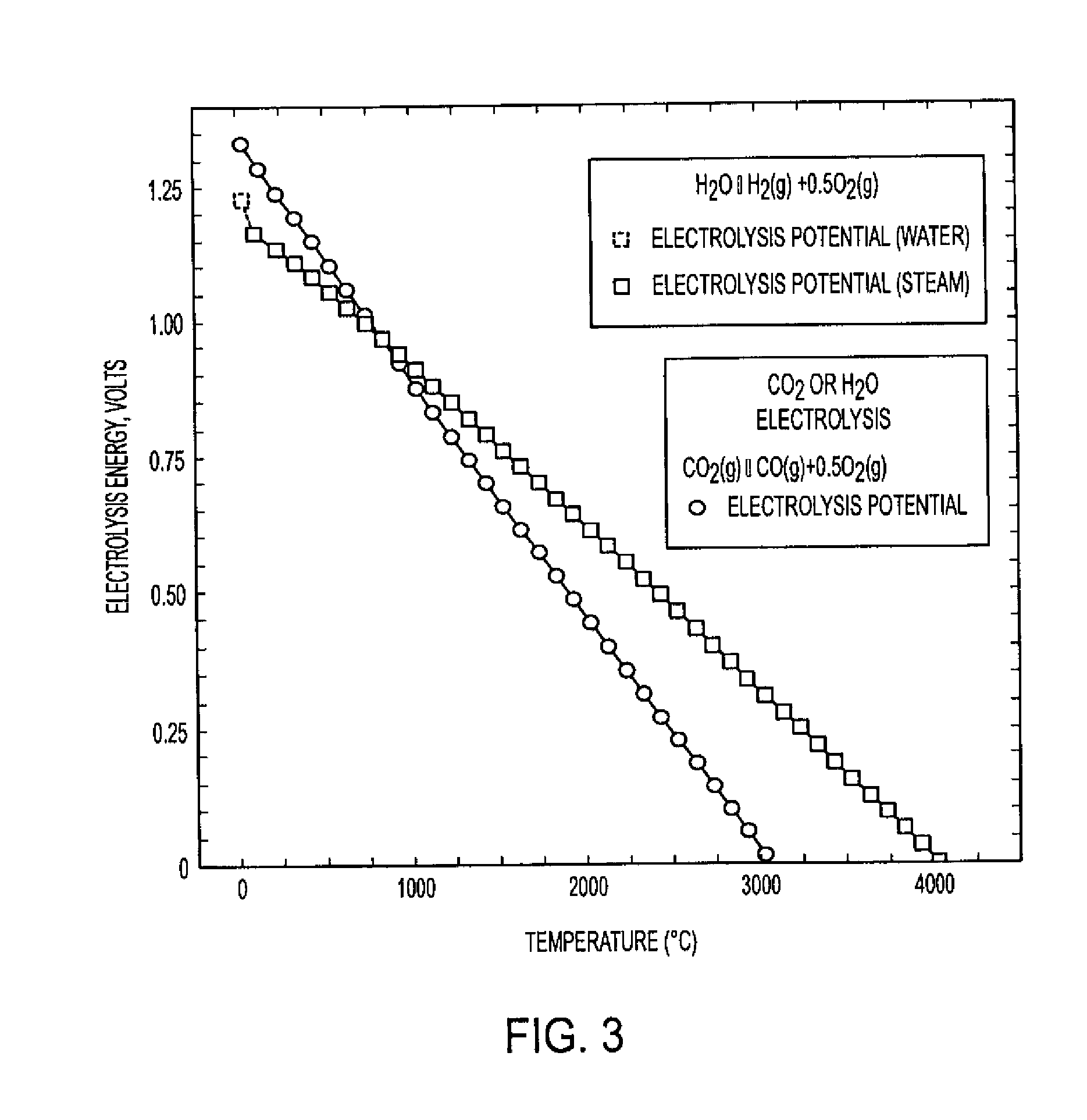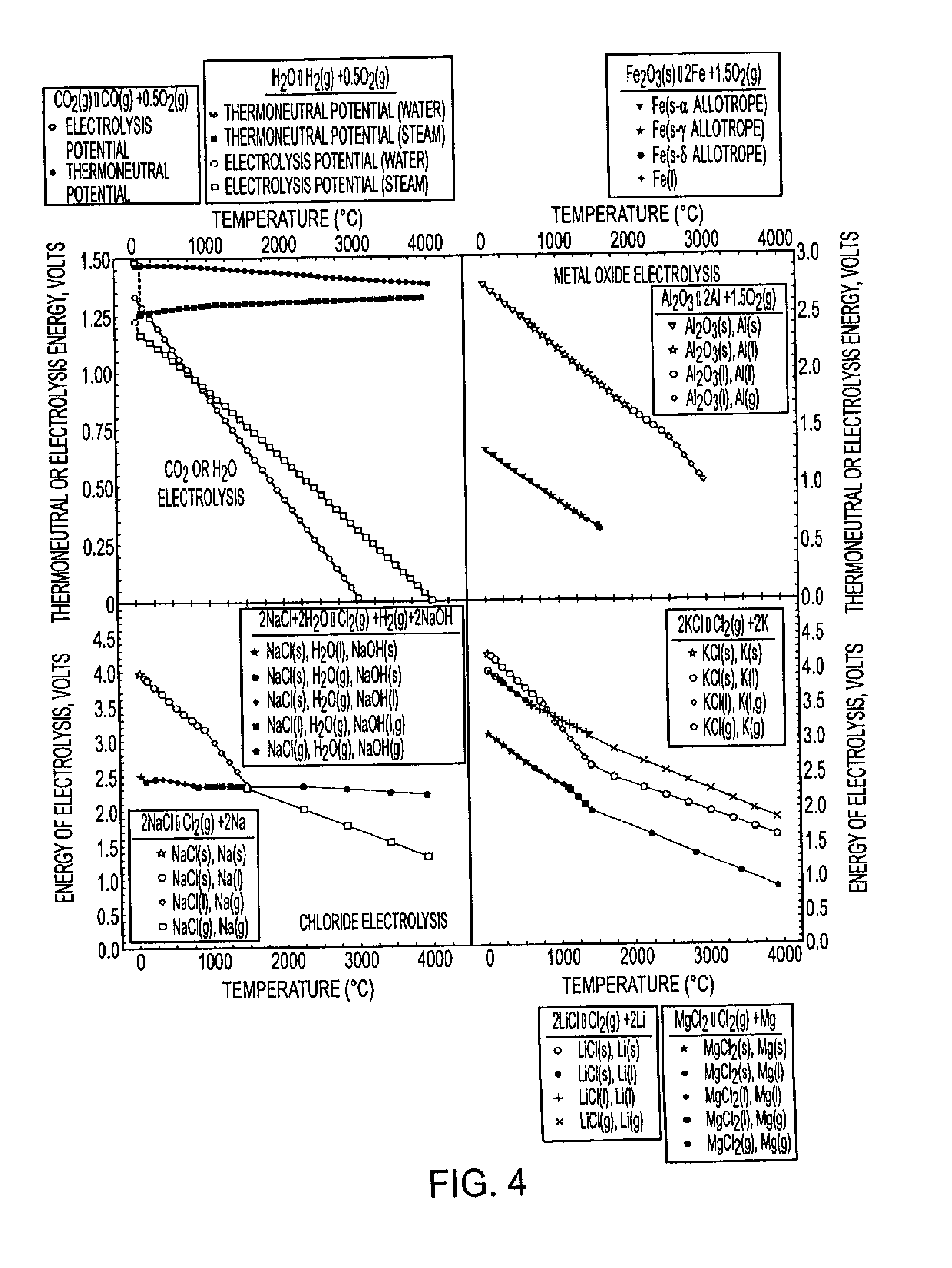Process for electrosynthesis of energetic molecules
a technology of energetic molecules and electrosynthesis, applied in chemical/physical/physical-chemical processes, electrolysis components, energy inputs, etc., can solve problems such as complex rigorous theoretical support of processes, and achieve the effects of reducing the amount of energy needed, reducing co2 emissions, and efficiently using solar energy
- Summary
- Abstract
- Description
- Claims
- Application Information
AI Technical Summary
Benefits of technology
Problems solved by technology
Method used
Image
Examples
examples
[0088]Experiments were carried out to demonstrate the process for solar electrosynthesis of energetic molecules, specifically the Solar Thermal Electrochemical Photo process of carbon dioxide capture and conversion to solid carbon and to carbon monoxide. It was shown that the required carbon capture energy is low and can be minimized in lithium carbonate compared to alternate molten carbonates such as potassium carbonate and sodium carbonate. We observed that solid carbon is the energetically preferred carbon capture product at temperatures approaching up to 900° C., and the monoxide product becomes energetically preferred at temperatures over 900° C. Without being bound to any theory, it is observed that the experimental carbon capture correlates with:
Li2CO3(molten)→C(solid)+Li2O(dissolved)+O2(gas) (31A)
Li2CO3(molten)→CO(gas)+Li2O(dissolved)+½O2(gas) (31B)
When CO2 is bubbled in, a rapid complete reaction back to the original lithium carbonate occurs:
Li2O(dissolved)+CO2(gas)→Li2CO...
PUM
| Property | Measurement | Unit |
|---|---|---|
| temperature | aaaaa | aaaaa |
| temperature | aaaaa | aaaaa |
| temperatures | aaaaa | aaaaa |
Abstract
Description
Claims
Application Information
 Login to view more
Login to view more - R&D Engineer
- R&D Manager
- IP Professional
- Industry Leading Data Capabilities
- Powerful AI technology
- Patent DNA Extraction
Browse by: Latest US Patents, China's latest patents, Technical Efficacy Thesaurus, Application Domain, Technology Topic.
© 2024 PatSnap. All rights reserved.Legal|Privacy policy|Modern Slavery Act Transparency Statement|Sitemap



